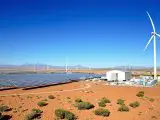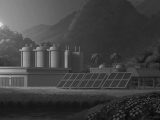
AFC Energy Slashes Hydrogen Fuel Cell Costs by 85% – A Diesel Killer by 2026?
June 13, 2025Hydrogen fuel cells might finally be done warming the bench—because AFC Energy just made a serious move.
A Major Step Forward for Off-Grid Power
AFC Energy plc just pulled off something big: an 85% cost cut on its 30kW hydrogen fuel cell generators. Yep, you read that right. Thanks to smart engineering and a shift to cheaper stack tech, these clean, zero-emission units are getting dangerously close to knocking diesel out of the game—especially in off-grid and temporary industrial setups.
And they’re not dragging their feet. AFC is targeting mid-2026 for delivery and already locked in a major manufacturing deal with UK-based Volex Plc to kick production into high gear.
Why This Matters: Diesel’s Stronghold Is Weakening
For years, talk of hydrogen fuel cells replacing diesel was more sci-fi than street-ready. The numbers just didn’t work. High costs kept it out of reach—especially in sectors where diesel has ruled for decades like construction, transport, and event infrastructure.
But this… this shifts the narrative. With AFC pushing toward diesel-level costs, it’s not just theory anymore. It’s a real challenge aimed straight at the sectors that need industrial decarbonization the most—right when the pressure to cut emissions is hitting a fever pitch.
The Secret Sauce Behind the Cost Drop
No smoke and mirrors here—just good old-fashioned value engineering. AFC stripped the excess, leaned into smarter design, and introduced a more affordable stack tech. They didn’t spell out every design tweak, but here’s the bottom line: this is what manufacturing maturity looks like. It’s not just leaner; it’s smarter from the ground up.
What Volex Brings to the Table
Volex isn’t just helping out—they’re supercharging AFC’s global plans. With their reach and operational muscle, AFC gets the benefits of scale: faster rollouts, cheaper parts, and a more reliable supply chain. That means fewer bottlenecks and better margins as things ramp up. Basically, it’s clean energy meeting industrial strength.
The Bold Play: No Handouts Needed
Here’s where it gets even more interesting. John Wilson, AFC’s CEO, isn’t counting on government subsidies to make this fly. That’s unusual in the hydrogen production space, where public funding has been the lifeline for most players. AFC’s aiming to stand on its own two feet—and if they pull this off, they won’t just be cost competitive… they’ll be convincingly independent.
Big Implications for the Industry
If companies running construction sites or remote infrastructure can ditch diesel without taking a financial hit, that’s a real pivot point. We’re talking zero-emission technology without the usual trade-offs. No emissions, no extra costs—that’s the kind of win everyone’s been waiting for.
And this isn’t confined to the UK. With global agreements in motion and Volex on board, this has the potential to scale fast. It’s a serious play that could reshape off-grid power across borders.
A Reality Check: Challenges Still Ahead
Let’s not get ahead of ourselves. Mid-2026 is just year ahead, and scaling up always comes with its own bag of headaches. From distributed hydrogen production to fueling logistics, there’s still plenty to figure out.
But the momentum’s real. Fuel cell technology is growing up fast—and if AFC sticks the landing, it could be the biggest punch hydrogen has thrown at diesel to date. Whether it lands? That’s the part worth watching.
What Comes Next
Circle mid-2026 on your calendar. If these cost cuts hold up in real-world use, the way we think about zero-emission technology—especially in heavy-duty and temporary setups—could change for good. And this time, it’s not governments writing the checks. It’s the tech finally speaking for itself.



 With over 15 years of reporting hydrogen news, we are your premier source for the latest updates and insights in hydrogen and renewable energy.
With over 15 years of reporting hydrogen news, we are your premier source for the latest updates and insights in hydrogen and renewable energy.
This along with white/gold/natural hydrogen will turn the energy market upside down.
H2 Fuel Cells use Green H2…
Who is making Green H2 in the US? It is so pathetically low in the US that Trump cut the Green H2 Budget and put it all into Blue H2. How about a Mandate that all Wind and Solar Farms must make H2 with All of their Excess power. CA and TX are Flushing up to 30% of their Output in GWh each year and charging the Taxpayers for thr Flushed power.
Excellent article, just a couple of comments. In the article it states 2026 is still a couple of years off. But it’s next year.
Also with Afc Energy’s plc subsidiary Hyamtec Ltds new Ammonia to Hydrogen cracker units supplying Hydrogen at £10 per kg, onsite & on demand from 2026 also. I don’t think Hydrogen supply for the fuel cells will be any problem whatsoever. These cracker units can also be integrated into gas pipelines, eventually upto 100% Hydrogen. This will save multiple national companies vast amount of capital not having to replace their existing plants. These units will also save companies vast amounts of capital not having to upgrade & also lengthy waits to upgrade their Electrical grid systems. Because they don’t need it.